KPM’s1927
SS Op Ten Noort her story to her tragic end in 1945 due to an evil Japanese
sinking of this hospital ship after the ceasefire had been signed!
Please Note:
Firefox and some other search engines are not suitable
– Use “Internet Explorer” for this page to load perfectly!
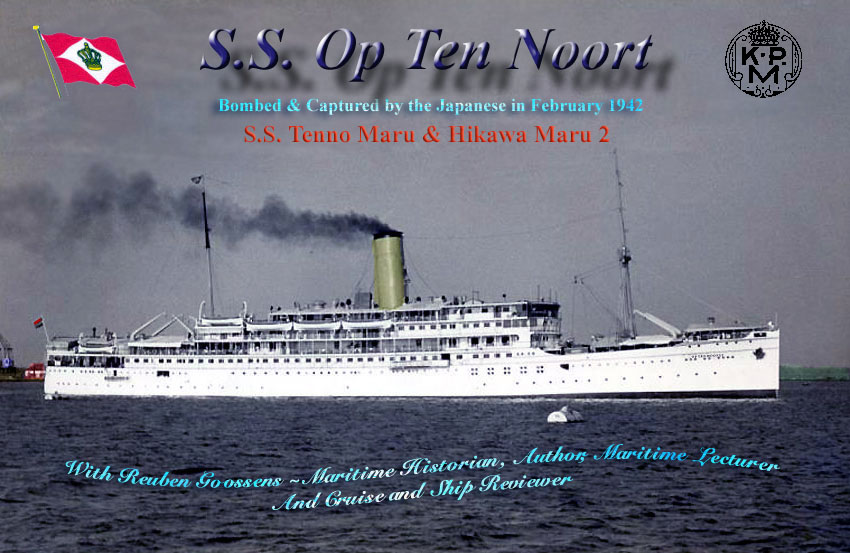
SS Op Ten Noort seen at Sea around the Dutch
East Indies (
Introduction:
In 1927, the Dutch Liner, the SS Op Ten Noort was built by the
“Nederlandse Scheepsbouw Mij” or the “Netherland’s
Shipbuilding Company” in
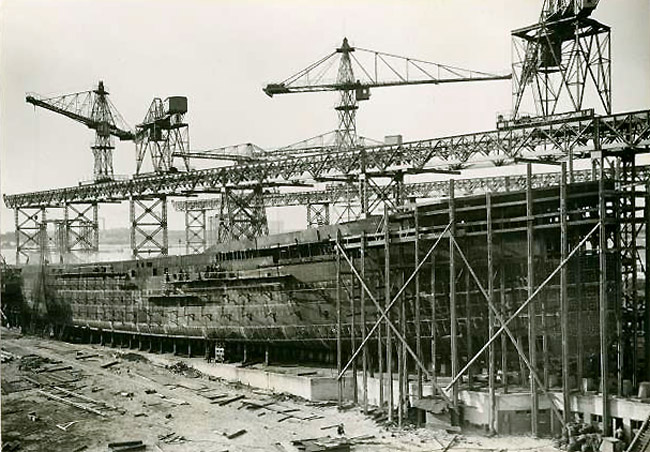
Here we see
the new KPM ship in building
With her hull and lower
superstructure ready, on February 12, 1927 the company’s new liner was
launched and was officially named the “Op Ten Noort,” which was a
strange name for the ship, considering it means “Up the North” yet
she would be operating down South in what was then called the “Dutch East
Indies,” being today’s
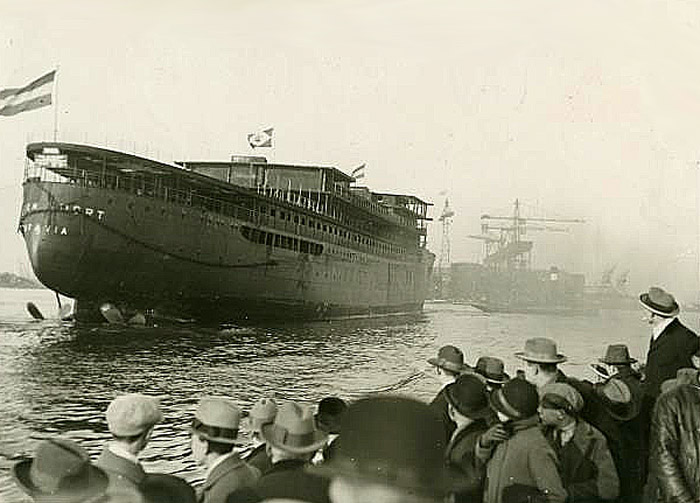
The Op Ten
Noort is seen entering the water having been launched and named on February 12,
1927
Her service in the Dutch East Indies was not surprising considering that the Company had their headquarters located in Java, for obviously it was there where KPN had a great deal of activity, both in passenger and cargo movements. It was one of the most profitable parts of the world at that time!
Prior to her
official commencement in November, she operated a promotional and test voyage,
which proved to be very successful, and then on November 9, 1927 the Op Ten Noort commenced her regular Passenger-Cargo
duties.
Her services were as follows: Singapore, Bangkok,
Saigon, Manila, Maluku Islands Group (Moluccas), Bali and
On all of the aforementioned services her 1924 built sister ship, the SS Plancius operated alongside her.
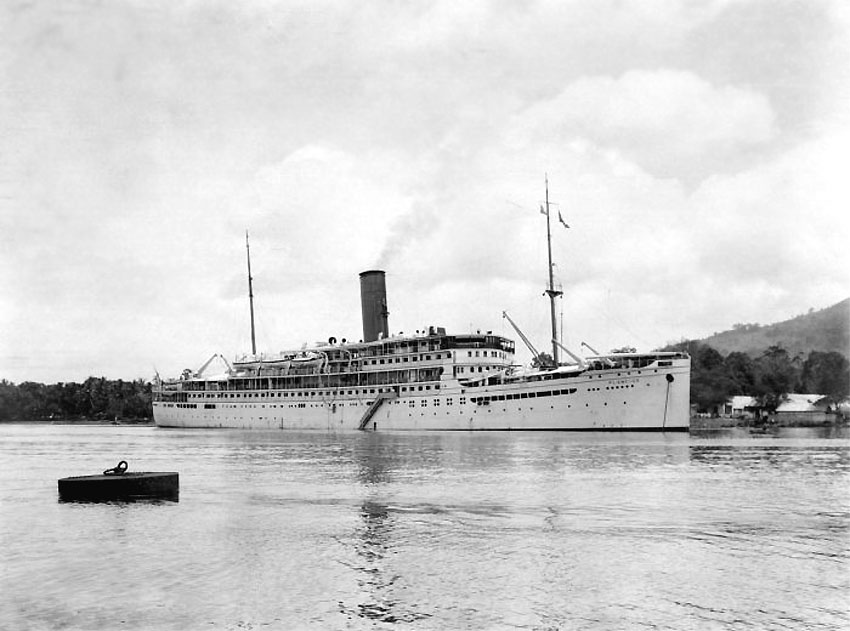
The 5,955
GRT SS Plancius
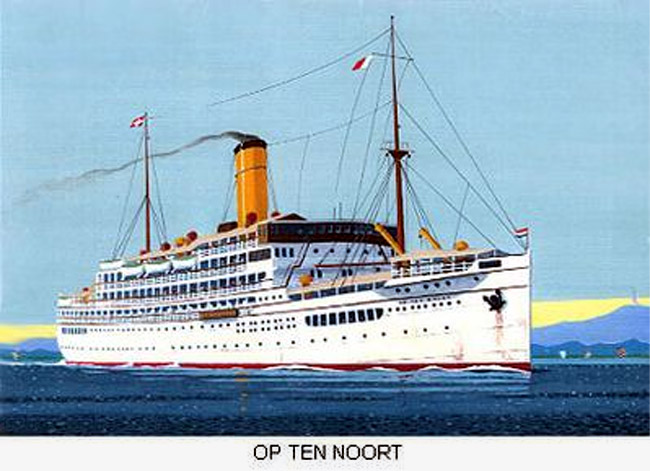
A colour
postcard of the ship
Op Ten Noort Facilities:
The Op Ten Noort
continued on her services for a good fourteen years and she proved to be a most
popular ship indeed. Her passengers enjoyed her on board luxuries, for First
Class was opulent to say the least with fine Lounges, Bars, a glamorous Smoking
Room and a Tropical Verandah, which was more like a
First Class had a further 130 outside cabins, being either for two persons or a single berth, a total of 130 berths, plus the 4 in the suites, making a total of 134 in First Class. Most cabins had shared facilities.
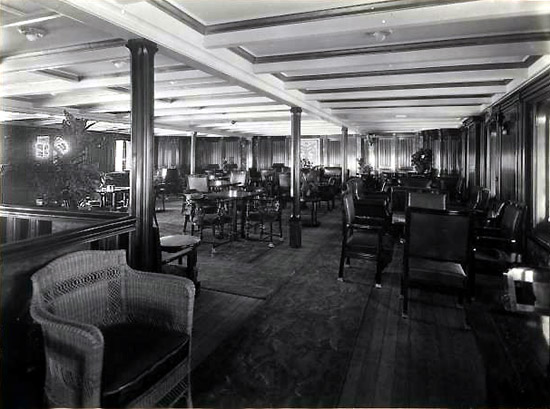
The First
Class Lounge
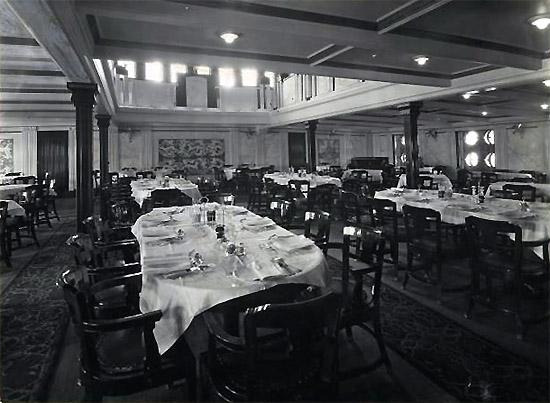
A grandiose
First Class Dining Room
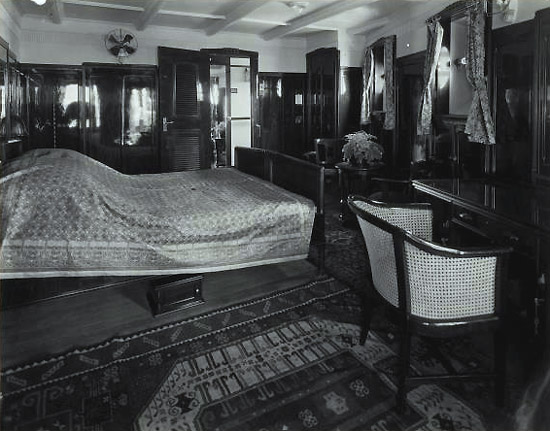
The Deluxe
Suite’s Bedroom
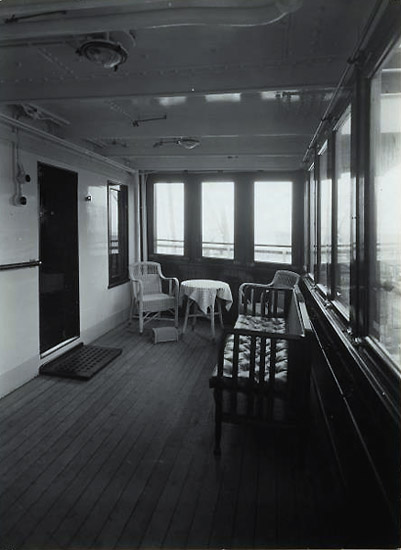
The Suites
Private Deck space
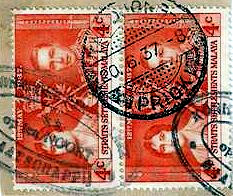
Passenger
stamps dated June 20, 1937 sent as can be seen, from the ship
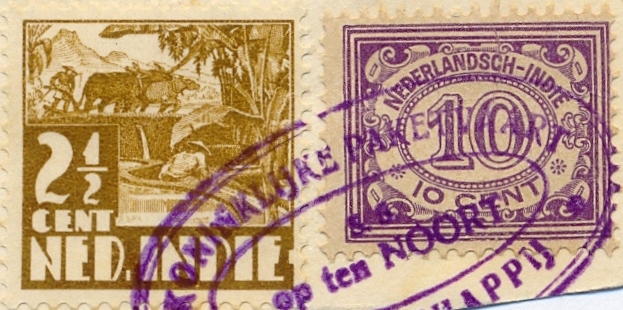
Op Ten Noort stamps clearly marked “
Thank you Jan van der Velden for these above four stamps
Second Class had just 18 cabins for two to four berths and again these were all outside cabins having a window or a porthole, with there being a total of 76 passengers.
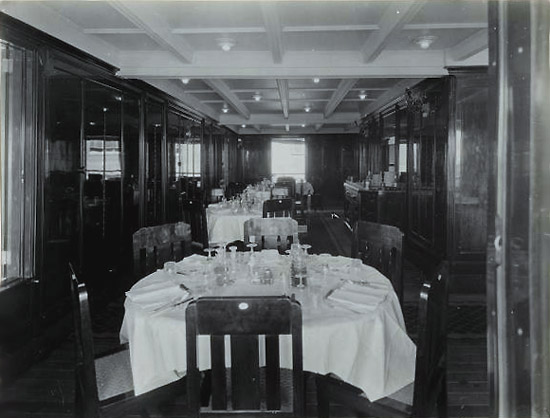
An intimate
Second Class Dining Room Seen set up for the Formal Night
In addition she offered “Tweendeck” space for “Day Passengers” travelling between ports long the coast of Indonesia, although a single overnight voyage was permitted and basic facilities was provided far forward and if you look at the ships early photographs, you will note 10 portholes located close together on both sides of the bow section. It is there were there was a lounge on the one side and an Indonesian style cafeteria on the other side. Sufficient bathrooms were also provided. Fares were very cheap for locals to travel this way and it was comfortable, as the interior space was good and up on deck there was an excellent spacious shaded area!
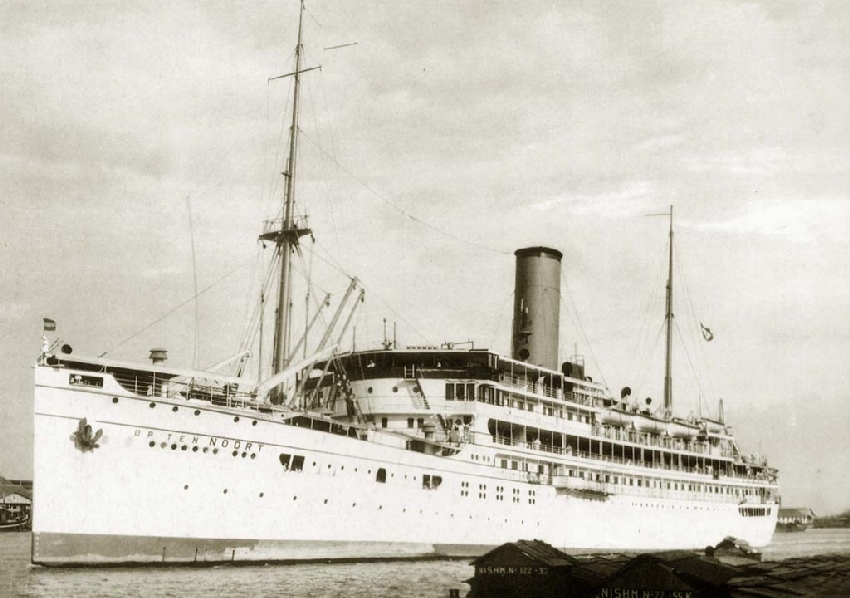
Note the 10
portholes under her name and the space behind them up to the last opening in
front of the
superstructure that is all part of the Day Passenger space available, as well as the foc’sle which is covered
She obviously had her regular maintenance done and was placed in dry-Dock when required to take care of the hull’s bottom, etc., as well having minor refits and other improvements made as time went by. The Op Ten Noort was famed for always being a wonderfully fresh looking and feeling ship at all times.
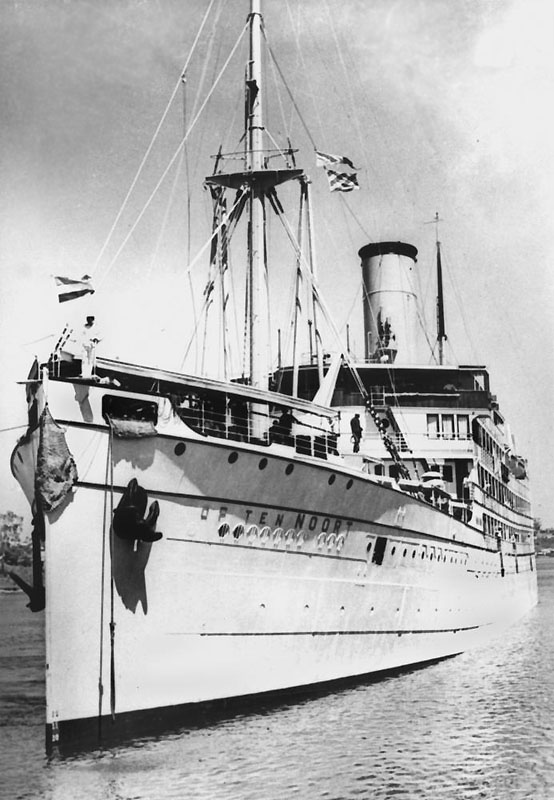
We see her
around the late 1930s as her ten portholes are now mostly closed in
But times were
changing, for now
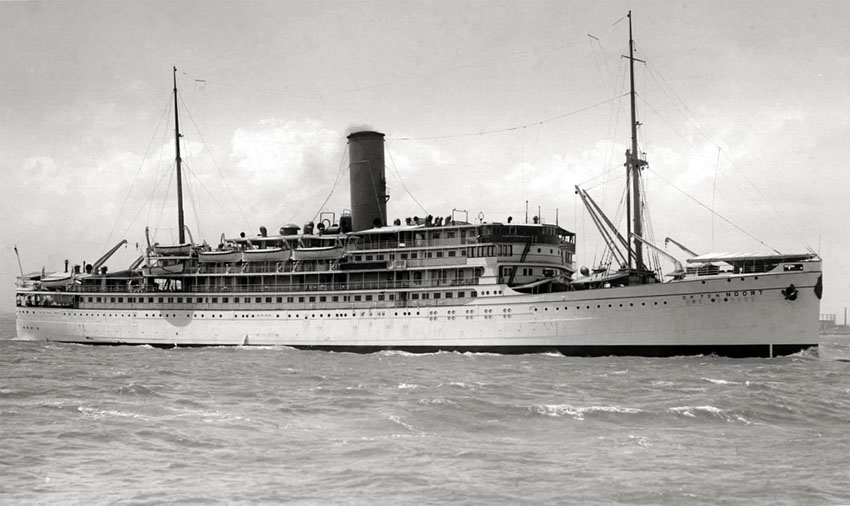
Troubled Times:
With troubled times ahead, the SS Op Ten Noort was drafted by the Royal Dutch Navy in December 1941 and whilst she was in Surabaya (Jakarta) she received an comprehensive refit in order to convert her into a fully operational hospital ship. However, no one could have imagined what was about to happen, for the great evil that did happen to this ship would illustrate the hideous evil and viciousness of the Japanese during the Pacific/Asian War, but especially what these Japanese did to a protected Hospital Ship, one that was so clearly marked, an all white ship, with her broad red band surrounding her hull as well as huge red crosses located on the hull and the funnel, in addition, the Japanese were officially advised and they even acknowledged her to be an official Hospital ship! But it is from here that her tragic wartime story begins!
War Breaks Out:
At the time of the attack on
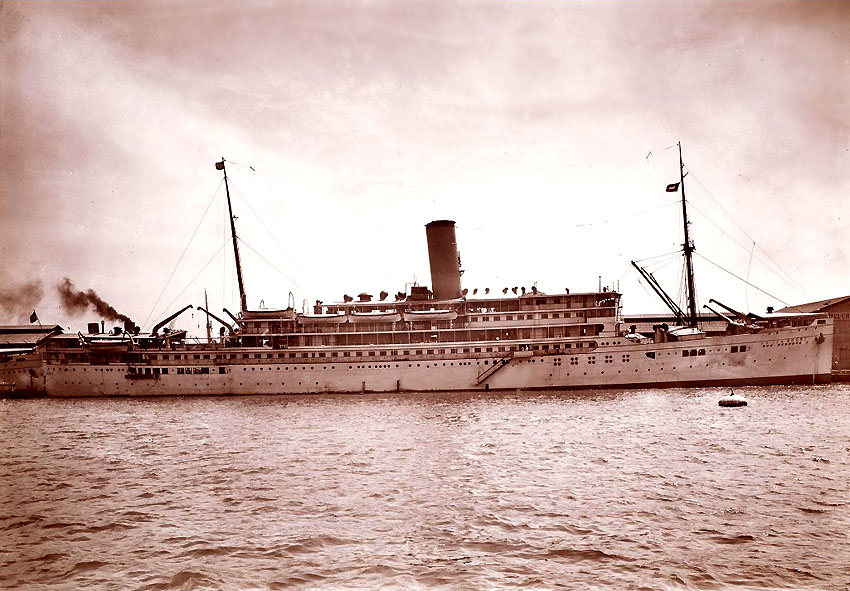
The Op Ten Noort is seen berthed awaiting her transformation for war duties
The SS Op Ten Noort was in
However as the SS Op Ten Noort departs Surabaya on February 21, heading for the Java Sea, suddenly Japanese aircraft appear high above and they head directly for the Op Ten Noort, as if they had been waiting for her, and before the crew know it the ship is bombed on two occasions, suddenly she takes a direct bomb hit and this bomb kills a Dutch surgeon, a nurse as well as a medical analyst who dies the next day of injuries. Another eleven others persons are badly wounded and are taken care of by the ships doctors and nurses.
Being a hospital ship, and considering the Dutch having officially
advised the Japanese that she was a Hospital ship and by attacking her, the
Japanese had officially broken the “Den Hague
Convention,” which amazingly the Japanese were signatories to! And remember that the ship was clearly marked, being painted all white having broad red band
surrounding her hull as well as huge red crosses located on the hull and the funnel, thus there were no excuses.
But, it seemed that the Japanese were no better that those evil murderous
Nazis, for who else would attack an innocent Hospital Ship?
The Op Ten Noort returned to port to make necessary repairs and whilst
she was in Surabaya Dutch
Government
sent a powerful “Note of Protest” to the Japanese, again through
the Embassy of Sweden. Unbelievably, the bombing of the Op Ten Noort was only
the beginning of the tragic wartime days of this sad ships history!
Considering there had been quite a battle going on
over the past week, it was on February 28, 1942 at 6 AM that Captain G. Tuizinga of the SS Op Ten Noort was ordered to steam
urgently to the
Later
that day she is ordered to drop anchor off
The Japanese destroyer “Ushio” arrives
and transfers to Op Ten Noort about 60 POW’s,
all of whom being survivors from the USS Perch which was sunk just that morning
in the
On March 5, the SS Op Then Noort arrives at
Makassar,
Renamed SS Tenno Maru:
On November 23, 1942 the Tenno Maru departed
Makassar under the command of a Japanese Captain bound for Yokohama carrying Javanese and Dutch sailors and Dutch
medical personnel, but all being prisoners. And again, this was in complete violation of the Hague
Convention, but that mattered little to the Japanese, for they have no honour
whatsoever!
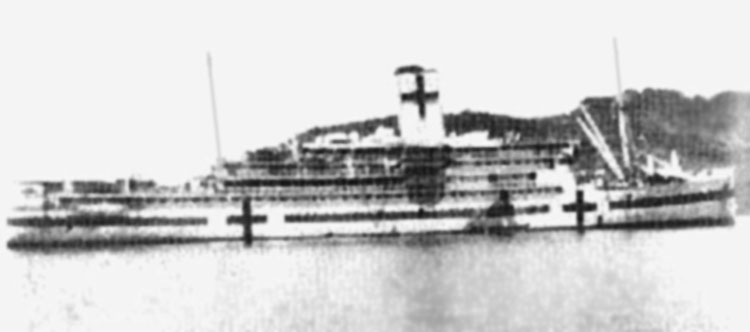
JIN SS Tenno
Maru
At the end of
April 1943, the Tenno Maru performs a series of voyages between
On December 11,
1943 she set sail from
*Truk is (also Known as Chuuk Atoll)located in the Caroline Islands, and it is infamous for its giant lagoon, considering is the final resting place for more than 100 ships, planes and submarines. This is the tragic legacy of a fierce World War II battle between the Imperial Japanese Fleet and Allied carrier planes.
Renamed SS Hikawa Maru No 2:
Considering that the allies were now closing in on the lies of the Japanese, the Imperial Navy decided to disguise the Tenno Maru in order to ensure that their hideous crime, which was obviously in total violation of the Hague Convention as they had captured a Dutch Hospital ship and yet, 1. They bombed her, and 2. They captured as well as manned her with Japanese, all of which are being major violations! Thus, the Jap’s feared that the ship could be recognized as being the captured Dutch Hospital Ship, the SS Op Ten Noort and thus a major target!
It is for that reason that during September and October in 1944 that the Tenno Maru was given some external remodelling. First they shortened and thickened her original funnel and then added a second dummy funnel, which they placed just aft of it, making her look like an older style ship having two squad funnels.
When she was completed on October 25, when the Tenno Maru was renamed the IJN Hikawa Maru No 2 and the Japanese ensured that an official notice had gone out to all the Allies out that this, their official Japanese liner will serve as hospital ship. Their strategy was that they had sent other notices over the wires that that the Tenno Maru had “encountered a mine at sea and sank” which of course was a scam, but the perfect means of hiding the true identity of the Hikawa Maru No. 2.
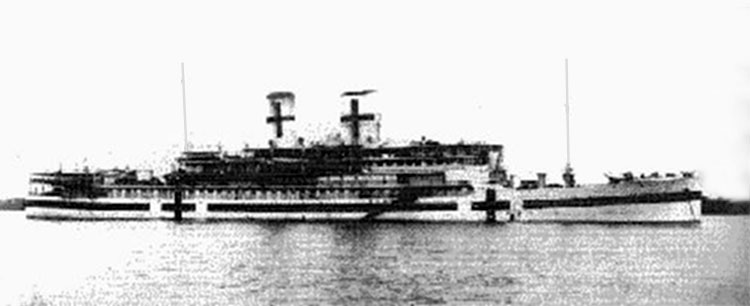
JIN SS
Hikawa Mary No 2 with her new dummy funnel
Sinking of a Dutch Ship and stolen Treasures:
For the remainder
of the war the ship sailed between
On August 15, 1945
the Japanese officially announce their surrender and their willingness to sign
the Peace Treaty. Then on August 17, 1945 just
two days after their surrender the Jap’s decide to sink
the ship and recover (steal) the treasure at a later date (just like the Nazis
did) thus orders were received from the
Naval Ministry to destroy and most importantly hide the ship for obviously they
do not want to be found out what they have done, or the ship to be found, for
the treasure must remain hidden!
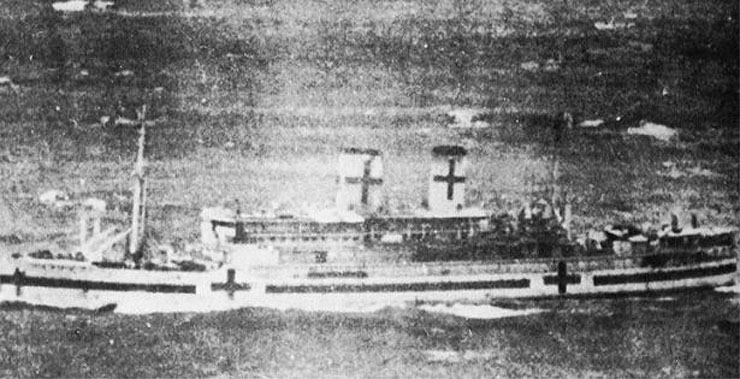
That same night SS Hikawa Maru No 2 departs Maizuru’s port for
Before lighting of the fuses, the ships captain and
his twenty-four crew are called for a meeting together, but instead they are all are
shot on the spot, for no one can be a witness. Then the fuses are lit and the
last naval members rapidly head for and board the awaiting lifeboat and they
row around 250 yards away and wait. The ship explodes and sinks in 400ft of
water. Later a small vessel arrives and picks them up. This is a tragic end of
the great and wonderful Dutch Liner, the SS Op Ten Noort!
She was officially removed from the Navy list on
September 12, 1945, thus she soon became the forgotten Dutch ship, and question
remained, did she really go down having been struck by a mine when she was the
Tenno Mary? The masquerade of the dummy funnel and Hikawa Maru No 2 was a good
one and it did work well!
In Conclusion:
The next year, in 1953, the Dutch Government decides
to lodge a Claim against the Japanese Government for 700 million Yen as
compensation for the loss of their ship. However later, this sum is revised
downward to 200 million Yen. However, after prolonged negotiations over so-many
years, the Japanese Government finally pays a miserable compensation of 100
million Yen to the Dutch Government in 1978.
It has been claimed that the ship was raised and the treasure which the Japanese claimed was valued “US$30 billion” was recovered by the Japanese government, although there are many who are very sceptical regarding their claims in regard of the actual value! The truth is also, did the Japanese return the gold and precious stones, etc., to those they stole it from in the first place? For I cannot find any records in regard that!
Specifications:
Ship:...........................S.S.
Op Ten Noort.
Building
No: ………………..185.
Call sign: ....................PKEA.
Built by: ..................... Nederlandse Scheepsbouw Mij,
Amsterdam 1942.
Launched: ...................December 2, 1927
Engines: ......................2 x Lentz-Reciprocating Steam
Engines, 6,000 IHP.
Propellers: ...................2 screws.
Rudder: .......................Single Plate.
Speed: ........................15.5 knots.
Tonnage: .................... 6,076 GRT.
Length: .......................129.50m -
444.2ft.
Beam:
.........................16.80m - 55ft.
Draft: ..........................6.70.m
- 19.2.
Accommodations:………….134 First, 52 Second & Tween-Deck Day-passengers.
Crew: ..........................162.
Holds: .........................3.
Cargo
Capacity:……………..189,305
Cub ft
Home
port: ...................
Flag: ........................... The
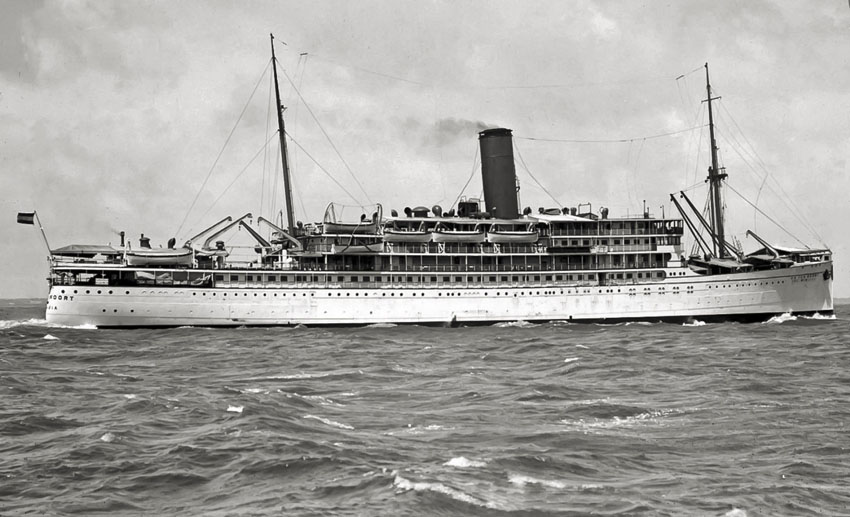
Here we see a fine starboard side on photo, but it is also a good view of her beautifully traditional shaped stern
Go to Page Two for a Partial
Deck Plan
Also further information not provided on this page
****************************
